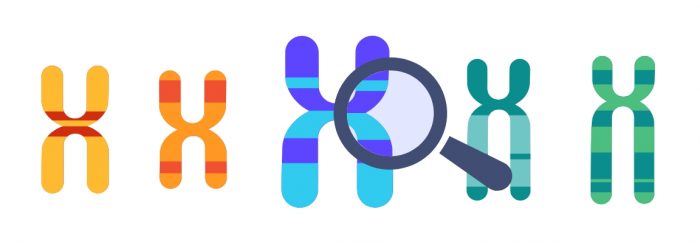Yakut ancestry? What does it mean? You may be wondering who the Yakuts are and where they came from. Approximately half a million people in the world make up this ethnic group. Find out more about your origins and discover the exciting region of Yakutia.

An insight into the Siberian lifestyle
The Yakuts are an ethnic group who reside mainly in Sakha, the largest state within Russia, which is commonly referred to as “Yakutia”. The capital city of this Siberian region is Yakutsk, the most populous city in the Northeast region of the country. It is located on the banks of river Lena, which flows into the Arctic Ocean.
Yakutsk is one of the coldest cities in the world, with an average temperature of 16.2°F (-8.8°C). Despite the low temperatures during the winter, the temperatures in summer are warm. This Siberian city is twinned, among others, with Fairbanks, Alaska (United States) and Vaughan, Ontario (Canada).
A high percentage of this Russian region is covered with taiga, although tundra can also be observed. Mountain landscapes are very frequent, especially in the East of Yakutia, and there are numerous glaciers and ice crusts. The remains of many pre-historic species (e.g. mammoth) have been recovered from this area.
In contrast to other neighbor populations, the language spoken by the Yakuts falls within the Turkic language family. The script used for writing in Yakut is the Cyrillic (which is also used to write in Russian and Ukrainian, for example), although the alphabet has some extra characters which are not used in any other languages.
Another representative characteristic of this population is their engagement in horse and cattle breeding, while other ethnic groups in the region focused on hunting. It is not surprising then that their traditional meals include many dairy products, either from cow or reindeer milk. Fish is also a key component in the Yakut diet.
The animals they breed are not conventional, as they are adapted to the severe weather conditions in which the Yakut live. These species are known as Yakutian cattle and Yakutian horse, and they have shown to stand extremely low temperatures.
The main industrial activity in the Sakha area is mining. This region is known worldwide because of its diamond deposits, as some of the biggest diamond mines of the globe can be found in this region. There are also gold, mercury and coal reservoirs, among many others.
Even though most of the Turkic peoples are Muslims, the Yakuts are predominantly Orthodox Christian. However, the shamanist influence can also be noted in their traditions.
The traditional clothes are made up of animal leather and fur, suitable for the harsh weather conditions in the area. Even though they had a different traditional costume for every situation in the past (working, travelling, etc.), the use of these clothes is now limited for festivities.
Why do the Yakuts show these unique features?
One thousand years ago, a group of Turkic farmers traveled from the south of Russia to the Lena river region pushed by the invasion of other populations. The Yakuts arise from the mix of these farmers with the native inhabitants of the surrounding area.
Over the years, this ethnic group expanded its presence across the region. The word Yakut comes from the word “yako”, which means “foreigner” in Evenki (a Tungusic language spoken in Russia and China).
At that time, they were able to travel thousands of kilometers because they were horse-riders. This characteristic makes the Yakut population genetics illustrative for long distance gene migration. Gene migration takes place when a genetic variant is transferred from one population to another.
According to the genetic data available, this long-distance gene migration seems to have been derived from the union of male horse-riders from the lake Baikal area with females from other areas. But, how are they able to obtain this information from genetic data?
Paternal and maternal ancestry
Tracing the maternal and paternal ancestry allows us to get a better insight on what happened in the past. As we all know, a zygote is generated upon the union of an egg cell and a sperm cell (gametes). Both gametes carry 23 chromosomes, so that together they can add up to the 46 chromosomes the zygote contains.
Chromosomes can be classified into two groups: autosomes (22) and sexual chromosomes (1). Each zygote contains one sexual chromosome from the egg cell (always an “X” chromosome) and another from the sperm cell (either an “X” or a “Y” chromosome). This pair of chromosomes will be responsible for gender determination (XX for female and XY for male).
Paternal ancestry: while the X chromosome can be transmitted both by the egg and the sperm cells, the Y chromosome is exclusive for the sperm cell. Thus, the Y chromosome is always transmitted from father to son. Women are not able to trace their paternal ancestry with their own genetic information because they lack this chromosome.
However, it is possible to obtain this information from the genetic data of other men in the family. For example, the Y chromosome analysis of the father, brother or grandfather of a woman can provide her her paternal ancestry information.
Maternal ancestry: inside our cells, DNA can mainly be found making up our chromosomes, but there is also a small percentage found in some compartments called mitochondria (mtDNA refers to mitochondrial DNA). The mitochondria in the zygote come from the egg cell, so mtDNA is always passed on by the mother. Both men and woman can trace their maternal ancestry.
Using genetic information to describe the history of man
Turning to the matter in hand, it has been observed that the maternal ancestry in Yakuts is closer to other populations in the Sakha region, while the paternal ancestry shows a lower degree of similarity. These results would suggest that the first Yakut men came from a different region.
To date, it is still unknown what the original location the farmers moved from was nor the level of interaction with the native populations of the Lena river area. Even though the genetic composition of the Yakut population is the result of a mix of groups, they have a Turkic lifestyle. How is this possible?
It could be explained because genetics and cultural traditions are mostly independent factors, as it can be observed in other ethnic groups around the globe. For example, even though the ancestry of some people in Portugal and Brazil can be similar, their cultures are different.
Because of the low temperatures in Siberia, the biological material retrieved from the area is better preserved than in other regions where the weather is warmer. The genetic data obtained from Yakut graves samples has been crucial to outline the migration routes taken by these populations across the Sakha area over the years.
Their farming culture, their Turkic language and their religion, are some of the many distinctive features which make the Yakut a unique population within this Siberian region.
At this point, you may be curious as if you have Yakut ancestry. You can easily get this information by simply taking a saliva sample at home. Your tellmeGen’s ancestry DNA test will let you know if there is any percentage of your genetics which resemble the Yakut.



